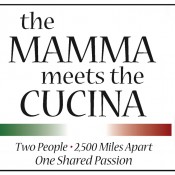Wondering how to make the perfect pot roast? Look no further, as my friend and blogging partner offers up some fantastic suggestions! Enjoy….
 I often get questions from readers on how to make a large pot roast that is not dry and tasteless. I am here to tell you that it is not as difficult as you think to make a juicy, tender roast, out of an otherwise tough piece of beef! The secret is good seasoning and slow cooking.
I often get questions from readers on how to make a large pot roast that is not dry and tasteless. I am here to tell you that it is not as difficult as you think to make a juicy, tender roast, out of an otherwise tough piece of beef! The secret is good seasoning and slow cooking.
Here’s my tips:
(DISCLAIMER: I do NOT use specific measurements and directions. The fact that I am Italian is enough of an explanation for that. If you can’t handle my style of cooking, then I sincerely apologize, and feel very badly for your pot roast.)
Start with a seasoning rub that you will coat your roast in. I prefer using a variety of chopped FRESH herbs like thyme, basil, parsley, rosemary, etc. I mix all the herbs with EXTRA VIRGIN Olive Oil and KOSHER SALT and cracked black pepper. Don’t skimp on the olive oil and the be sure to use the Kosher salt, it just dissolves so well and adds such amazing flavor. And DON’T forget the minced garlic!
Coat the meat with this mixture and broil it in the oven until you have a nice brown crust on it. Put in your meat thermometer (You’re gonna want to invest in one of these, they are pretty awesome!) Then turn the temperature down to 250 degrees and bake until your meat has reached an internal temperature of 130 degrees for rare-medium rare. You may cook it until it reaches a higher temperature for a more well done roast.
I personally, just keep watching my meat thermometer until its ready. But as a guideline – you could estimate somewhere around 20-30 minutes per pound of meat. But that is ONLY a guideline!
When you take your roast out of the oven, LET IT SIT! This is a good chance to work on your patience for about 20 minutes:) If you do not follow this step, you WILL end up with a dry roast. When it cooks in the oven, all of the juices travel to the center of the meat. If you cut it right away, you would be losing all this goodness! So let it sit, let the juices redistribute, and you’re golden!
The only other advice I can give you for achieving the perfect mouth-watering roast is to serve it with some mascarpone mashed potatoes. Then, my friends, you’ve got the perfect meal.
Buon Appetito!
Una Mamma Italiano





Recent Comments